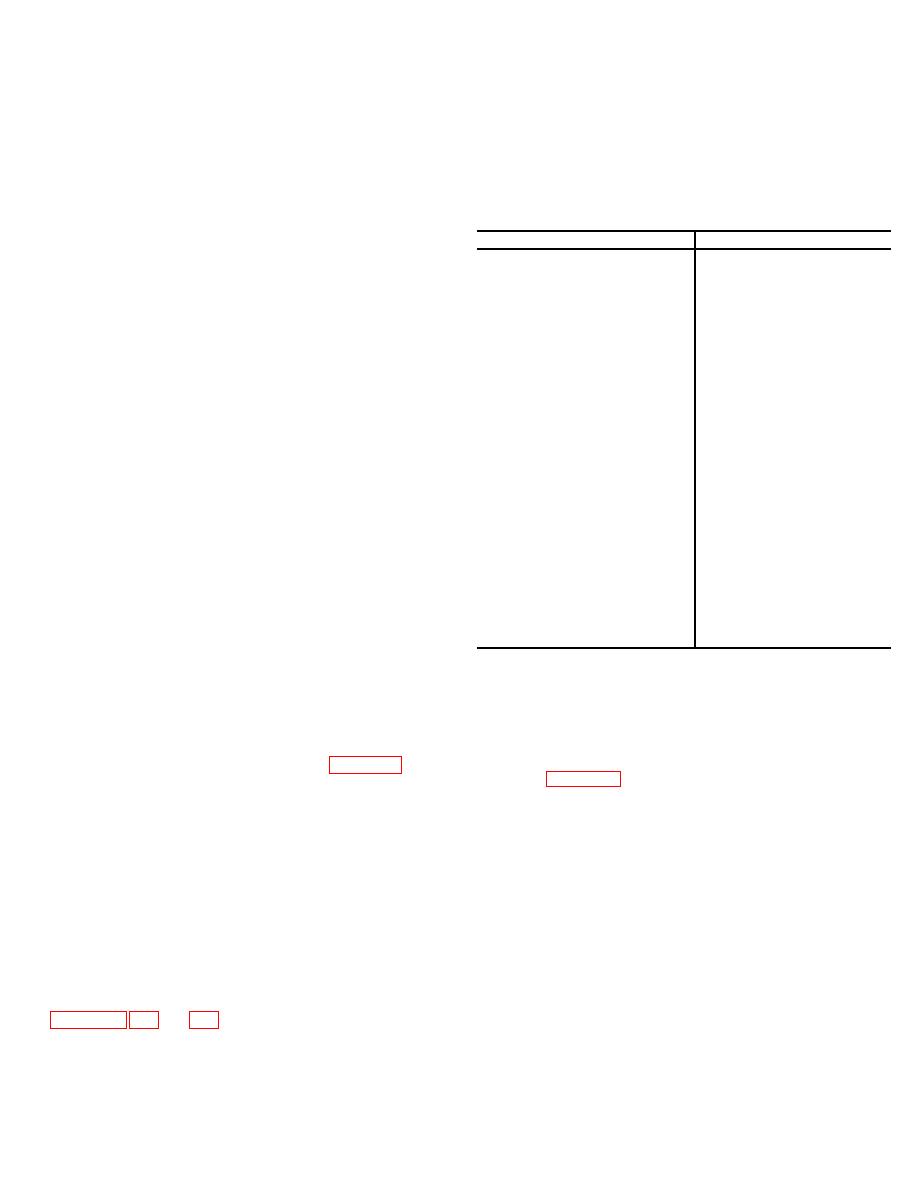
TM 32-5985-343-14&P
CHAPTER 2
SERVICE UPON RECEIPT AND INSTALLATION
Section I. SITE AND SHELTER REQUIREMENTS
Table 2-1. Tower Distance From Obstructions
2-1 SITING. Whenever possible, select a tower site
that meets the following requirements:
Obstruction
Distance to be maintained
Scattered trees and single,
200 yards
a. The area should be substantially flat for at least
small buildings
150 yards in all directions from the center of the site,
with not more than gentle sloping at several times that
Wire fences
300 yards
distance.
b. The site should be located on the highest level
High cliffs and deep ravines
More than 1 mile
area available in the general vicinity. (A site in a
sharply defined valley is usually unsatisfactory.)
Buried metallic conductors
300 yards
c. Mountainous or hilly terrain should be avoided.
(cables and pipelines)
d. Proximity to large bodies of water should be
avoided. Coastal refraction errors are a problem near
Chimney stacks and water
500 yards
shorelines. (If installation must be made on or near the
towers
coast, the most level area should be selected. Accuracy
is greatest when signals from the target area cross the
Overhead conductors (power
500 yards
coastline at right angles.)
lines, telephone lines, and
e. The earth surrounding the installation should
antennas) and railroad
have uniformly high electrical conductivity and a
tracks
uniform moisture content. Areas evenly covered with
grass or vegetation usually meet this requirement.
Rivers, streams, and lakes
600 yards
(Rocky or sandy soil has low conductivity and should be
avoided where possible. However, an area with uniform
Forests and metal structures
500 to 1,000 yards
low conductivity is preferable to an area of high
conductivity that is spotted with rocks or sand, or has
Mountains
5 to 25 miles
varying moisture content.)
f Regions showing scattered bare spaces of earth
2-3 MECHANICAL CONSIDERATIONS. To erect and
should be avoided. Such spaces usually indicate the
install the tower, an area approximately 135 feet (41
presence of rocks, mineral outcroppings, or underground
meters) long by 20 feet (6 meters) wide is required. The
streams.
area should be able to withstand at least 3,000 pounds
per square foot (14,648 kilograms per square meter).
g. The site should be far enough from obstructions
Firm clay or compact sand have these properties.
to assure greater accuracy of bearings. Table 2-1 lists
(Refer to figure 2-3.) If the area selected for installation
recommended distances that should be maintained
does not have this minimum load-bearing capacity, the
between the set and various obstructions.
size of all concrete piers must be increased to further
distribute the load. Consult civil engineers for advice.
2-2 OTHER REQUIREMENTS. In addition to the
requirements listed above, the site area should:
2-4 POWER REQUIREMENTS. Three-phase, 230/460
a. Be level so that operators can use equipment
V, 60 Hz electric power must be available for the hoists.
with maximum efficiency.
(Site should not be
2-5 SHELTER REQUIREMENTS. There are no shelter
located in depressions or gullies.)
requirements for the Antenna Tower TS-1A.
c. Be located away from dry streambeds. (Sudden
storms can cause flash flooding.)
d. Be surveyed before erection of the tower for
tower and pier layouts and for hoist location. Refer to
2-1


 Previous Page
Previous Page
